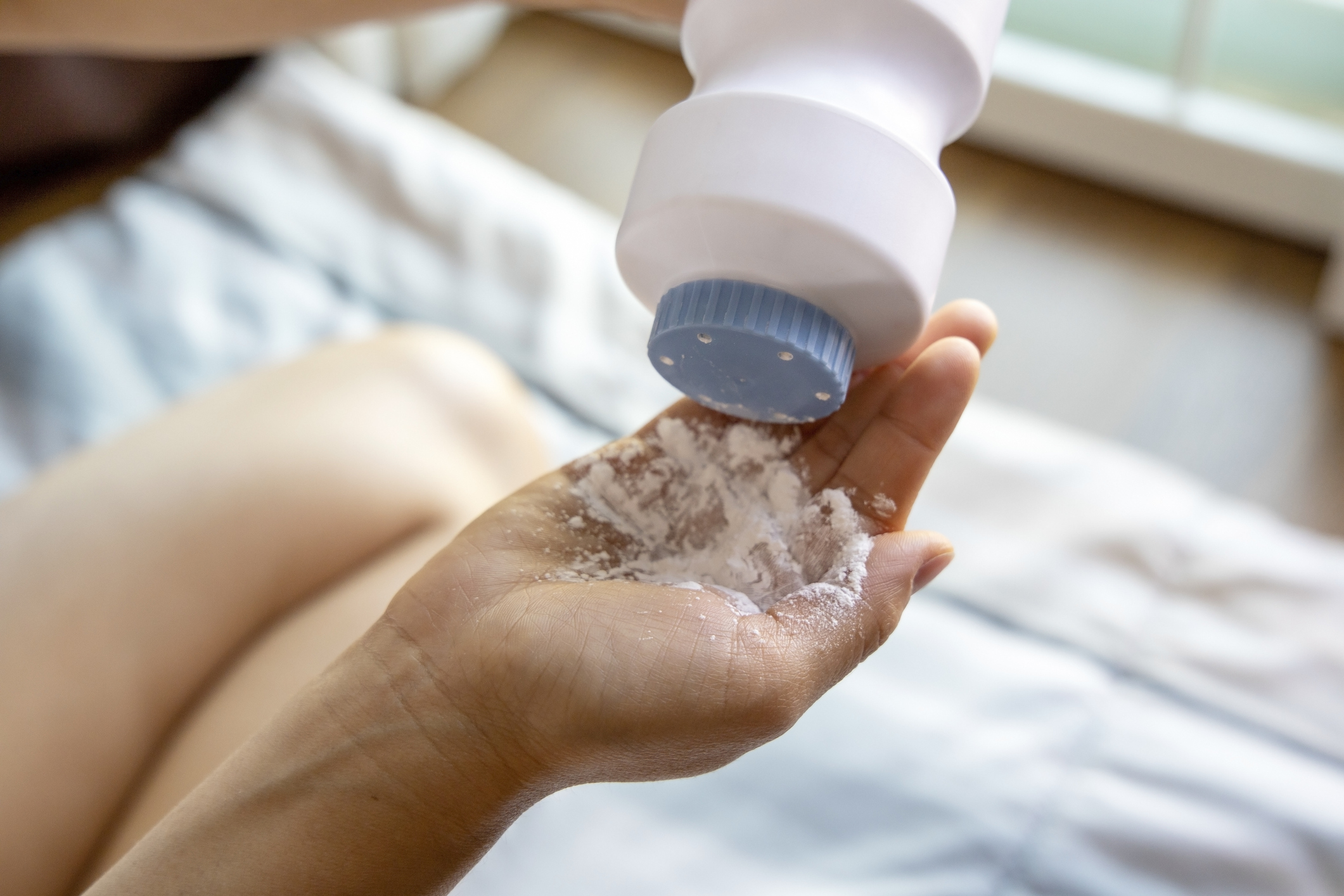
Johnson & Johnson is willing to pay almost $9 billion to settle thousands of lawsuits alleging that its talcum powder caused cancers, the company announced Apr. 4.
The proposal is the latest chapter in a long-running saga related to the company’s use of talc—a naturally occurring mineral that has been linked to cancer—in its baby powder. Johnson & Johnson stopped selling baby powder containing talc in North America in 2020, and last year announced plans to discontinue global use of the mineral and sell only a cornstarch-based baby powder formula. At the time, Johnson & Johnson representatives said in a company statement that the shift was a “commercial decision” to “meet the needs of our consumers, customers and evolving global trends.” In an Apr. 4 statement, the company maintained its “longstanding position that its talcum powder products are safe.”
Talc is not banned in the U.S., but today, many baby powder brands instead use cornstarch, which is used as an absorbent in cosmetics. While cornstarch is likely a safer choice than talc, some experts say it still comes with health risks. Here’s what to know.
The health risks of talc-containing and cornstarch-based baby powder
Just as parents use baby powder to keep their infants’ skin dry and free of rashes, some adults apply the product to their genitals, inner thighs, feet, or other parts of the body to absorb moisture and prevent chafing or skin irritation.
Some studies suggest that applying talc to the genital area may increase the risk of ovarian cancer. But other research, including a large study published in 2020, does not support that conclusion. The International Agency for Research on Cancer (IARC) considers using talc-based baby powders around the genitals “possibly carcinogenic.”
There is stronger evidence that the use of talc tainted by asbestos—another mineral that is often found near talc in the earth—is linked to cancers including mesothelioma, which affects tissue that lines internal organs. Since asbestos exposure is linked to lung cancer, inhaling asbestos-contaminated talc may also increase the risk of that disease. IARC considers talc tainted with asbestos a known human carcinogen. (J&J has long maintained that its baby powders do not contain asbestos, despite reporting to the contrary.)
Over time, inhaling talc—even the kind free of asbestos—can also contribute to respiratory issues including coughing, wheezing, and difficulty breathing, says Dr. Stanley Spinner, chief medical officer at Texas Children’s Pediatrics and Texas Children’s Urgent Care. Babies are at particular risk, he says, but respiratory issues are sometimes reported among adults as well. People who work in environments where they regularly inhale talc may be at risk of serious lung damage or cancer, research suggests.
Breathing in cornstarch baby powder may also cause lung issues over time, Spinner says. That’s again primarily a concern for babies, given their smaller airways, but the risk among adults is likely “not zero” either, he says.
“Anything that you inhale can irritate the lungs,” agrees Dr. Peily Soong, a pediatrician at Children’s of Alabama.
Do experts recommend using any kind of baby powder?
The American Academy of Pediatrics has long recommended against the use of baby powders that contain talc, because of both inhalation concerns and potential cancer risks. But what about cornstarch baby powder?
“If you have to choose between the two,” cornstarch baby powder is likely the better option, Spinner says. “But in general it’s better to avoid all of them” due to respiratory concerns.
Soong also does not recommend baby powder, even if it’s cornstarch-based, and says it’s usually not necessary anyway. If diaper rash is a concern, Soong recommends using a petroleum-based ointment, changing your baby frequency, and sometimes letting them go without a diaper at home.
“If a parent is determined to use any amount of baby powder,” Spinner says they should “put a little bit on their hand and very carefully apply it to the skin to minimize the risk of it getting into the air and being inhaled.”
More Must-Reads From TIME
- The 100 Most Influential People of 2024
- The Revolution of Yulia Navalnaya
- 6 Compliments That Land Every Time
- What's the Deal With the Bitcoin Halving?
- If You're Dating Right Now , You're Brave: Column
- The AI That Could Heal a Divided Internet
- Fallout Is a Brilliant Model for the Future of Video Game Adaptations
- Want Weekly Recs on What to Watch, Read, and More? Sign Up for Worth Your Time
Write to Jamie Ducharme at jamie.ducharme@time.com